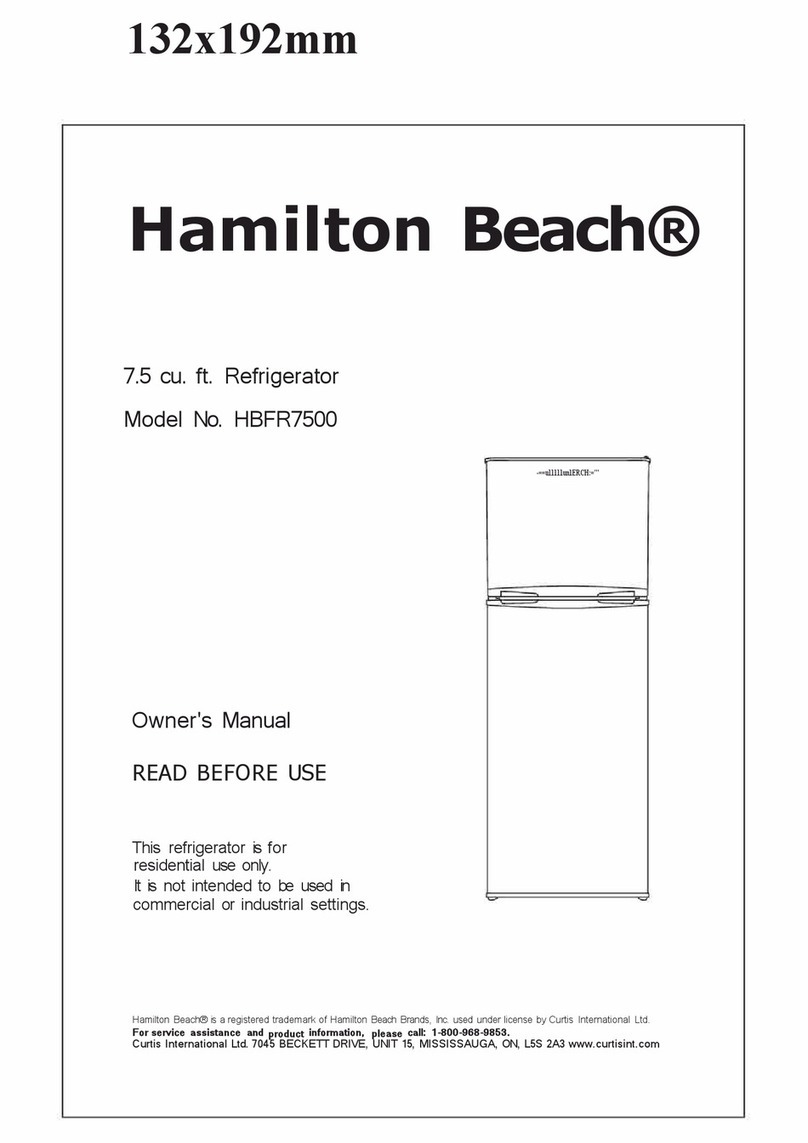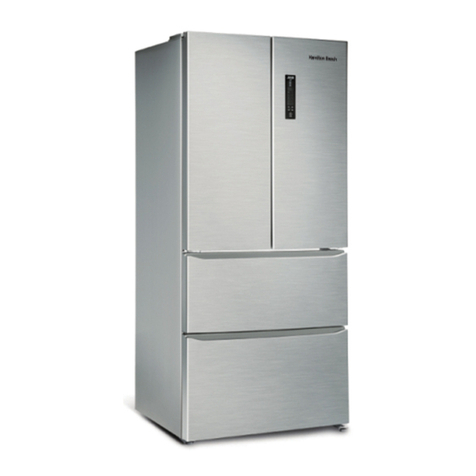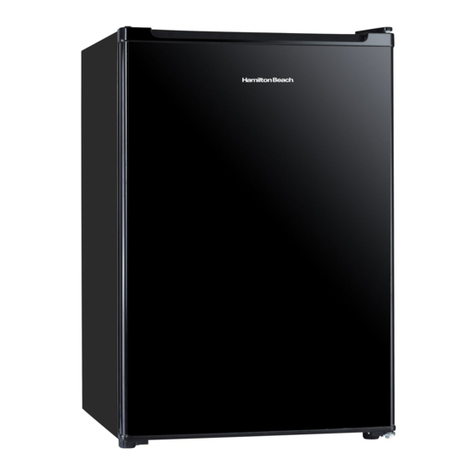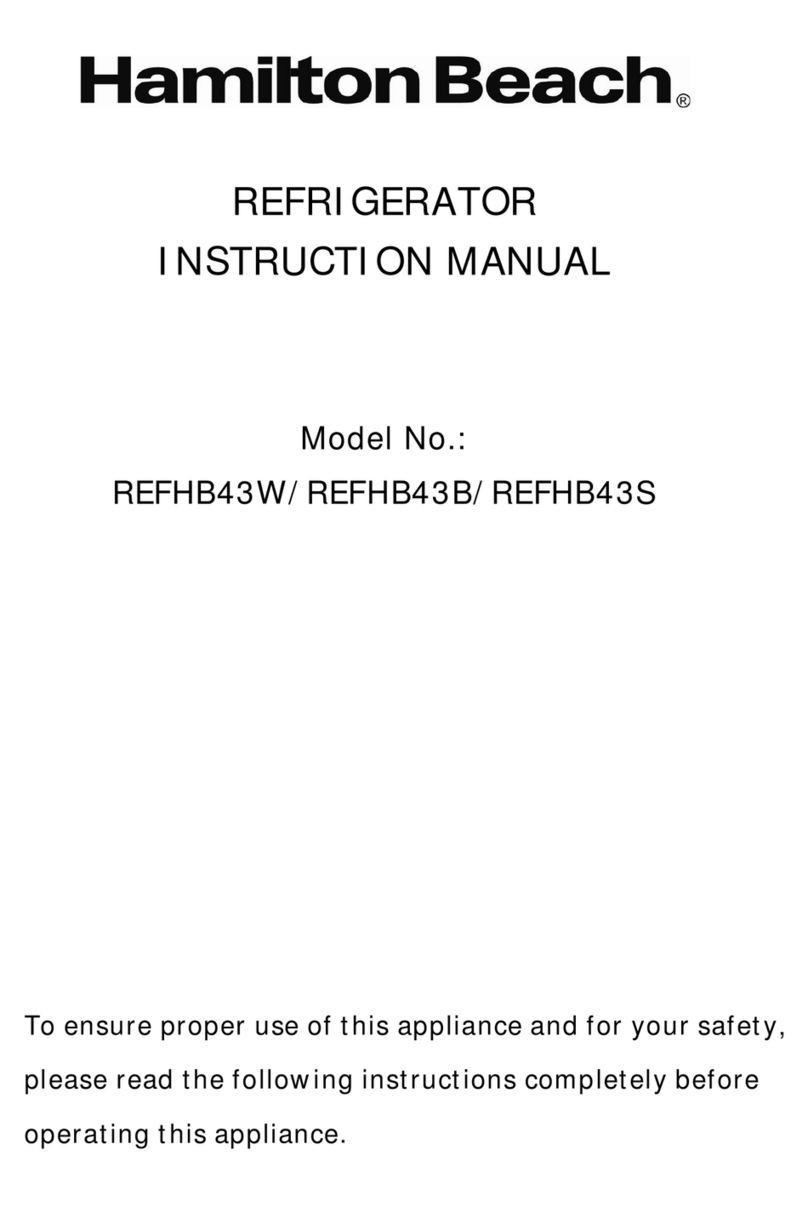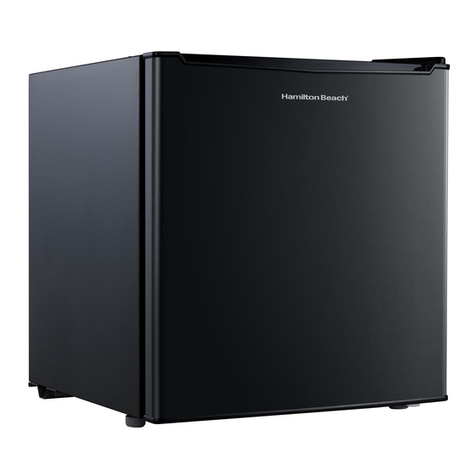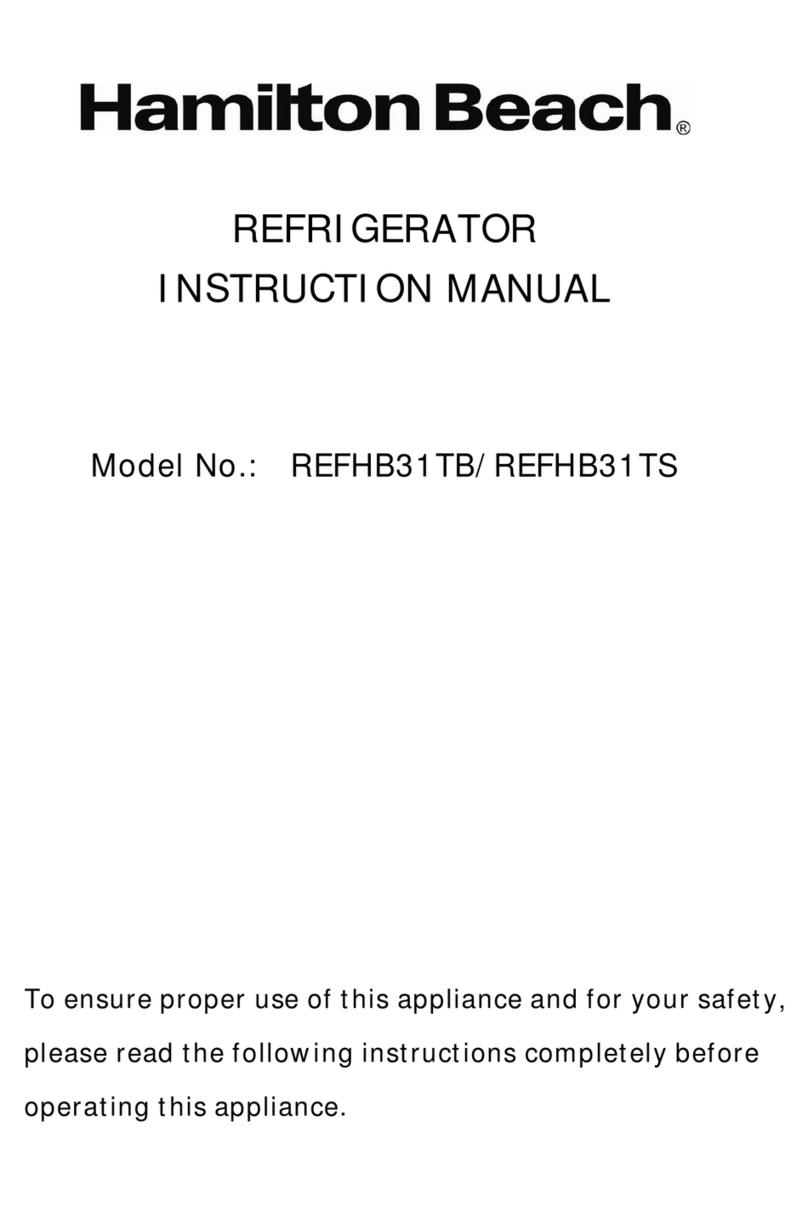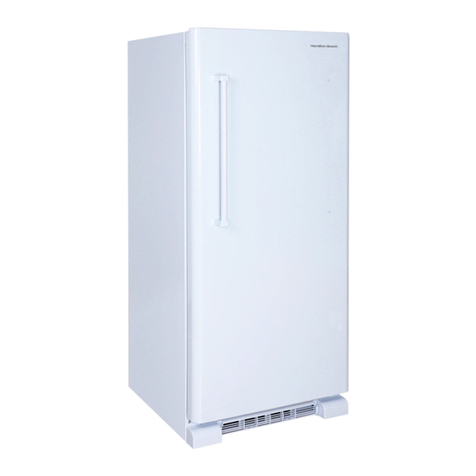
Hints for storage of frozen food
To obtain the best performance from this appliance, you should:
•Make sure that commercially frozen foods were adequately stored by the retailer.
•Be sure that frozen foods are transferred from the food store to the freezer in the shortest possible time.
•Do not open the door frequently or leave it open longer than necessary.
•Once defrosted, food deteriorates rapidly and cannot be refrozen.
•Do not exceed the storage period indicated by the food manufacture.
Hints for refrigeration
To obtain the best performance:
•Do not store warm food or evaporating liquids in the refrigerator.
•Cooked foods, cold dishes, etc. These should be covered and may be placed on any shelf.
•Fruit and vegetables: these should be thoroughly cleaned, dried, and place in the crisper drawer(s).
•Butter and cheese: These should be placed in airtight containers or wrapped in aluminum foil or polythene bags to
exclude as much air as possible.
•Milk bottles: these should have a cap and should be stored in the balconies on the door.
•Bananas, potatoes, onions and garlic, if not packed, must not be kept in the fridge.
For hygienic reasons the appliance interior, including interior accessories, should be cleaned regularly.
Caution! The appliances may not be connected to any power supply during cleaning. Danger of electrical shock!
Before cleaning switch the appliance off and remove the plug from the outlet, or switch off the circuit breaker/fuse.
Never clean the appliance with a steam cleaner. Moisture could accumulate in electrical components, danger of
electrical shock! Hot vapours can lead to the damage of plastic parts. The appliance must be dry before it is placed
back into service.
Important! Ethereal oils and organic solvents can attack plastic parts, e.g. lemon juice or the juice from an orange
peel, butyric acid, a cleaner that contains acetic acid.
•Upon installation of your new appliance, it is recommended that it be cleaned thoroughly.
•Wash the inside with a damp warm cloth soaked in lukewarm water and baking soda solution. The solution should be
about 2 tablespoons of baking soda to a quart of water.
•Be sure to keep the door gasket (seal) clean to keep the unit running efficiently.
•The outside of the refrigerator should be cleaned with mild detergent and warm water.
•Dry the interior and exterior with a soft cloth.
•To keep the inside sanitary without odor or dirty, regular cleaning required at least once a month.
•Do not allow such substances to come into contact with the appliance parts.
•Do not use any abrasive cleaners.
Daily Use
Cleaning
7
